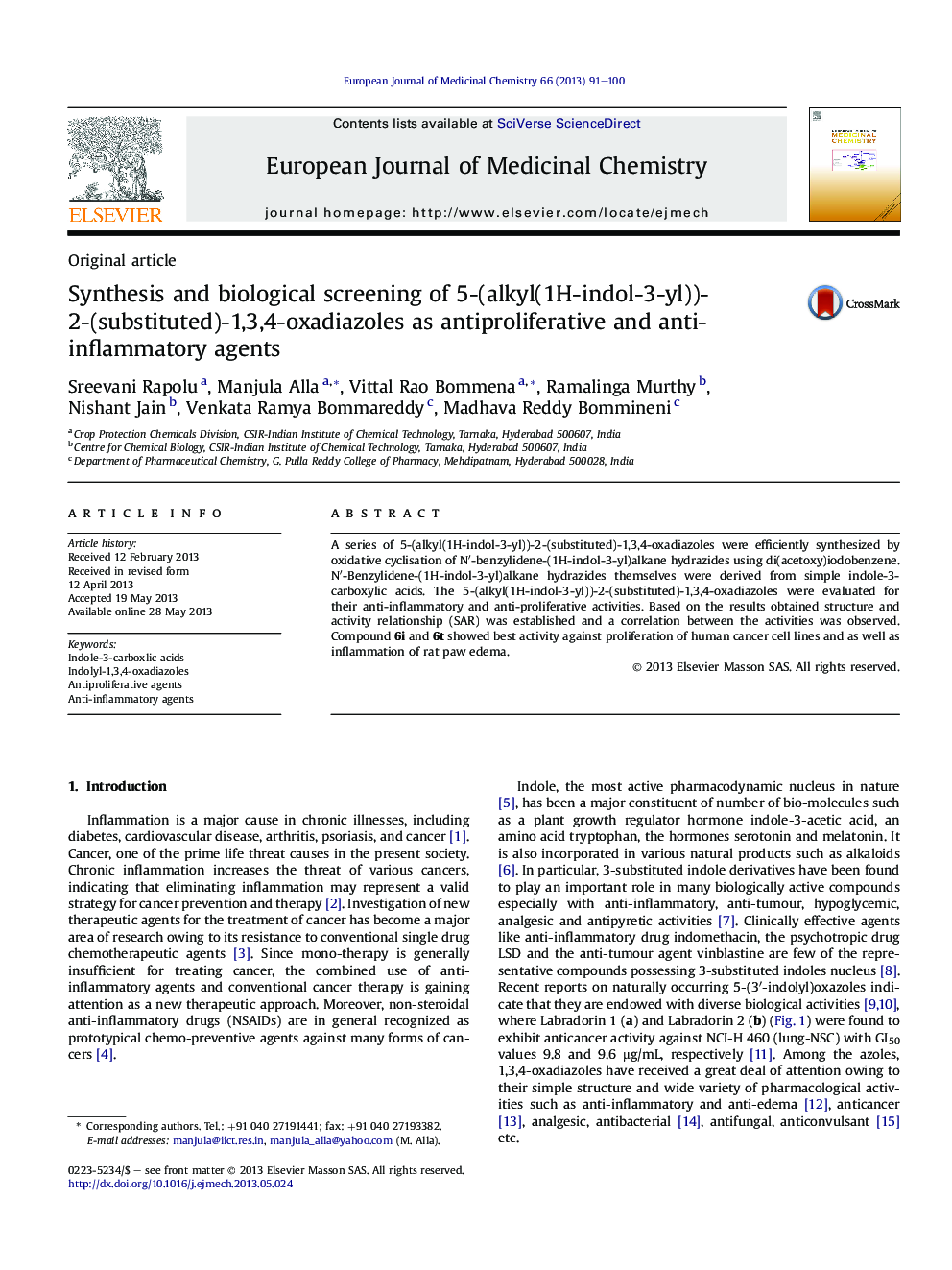| Article ID | Journal | Published Year | Pages | File Type |
|---|---|---|---|---|
| 1392710 | European Journal of Medicinal Chemistry | 2013 | 10 Pages |
•Titled compounds were synthesized using DIB mediated oxidative cyclisation.•Anti-inflammatory & anti-proliferative activities screened exhibit correlation.•Compound 6i and 6t showed better inhibition of paw edema compared to standard.•In vitro cytotoxicity evaluated against A-549, HeLa, HepG-2 and Du145 cancer cells.•6i, 6q and 6t are identified as good candidates against all the cancer cell lines tested.
A series of 5-(alkyl(1H-indol-3-yl))-2-(substituted)-1,3,4-oxadiazoles were efficiently synthesized by oxidative cyclisation of N′-benzylidene-(1H-indol-3-yl)alkane hydrazides using di(acetoxy)iodobenzene. N′-Benzylidene-(1H-indol-3-yl)alkane hydrazides themselves were derived from simple indole-3-carboxylic acids. The 5-(alkyl(1H-indol-3-yl))-2-(substituted)-1,3,4-oxadiazoles were evaluated for their anti-inflammatory and anti-proliferative activities. Based on the results obtained structure and activity relationship (SAR) was established and a correlation between the activities was observed. Compound 6i and 6t showed best activity against proliferation of human cancer cell lines and as well as inflammation of rat paw edema.
Graphical abstractA series of 5-(alkyl(1H-indol-3-yl))-2-(substituted)-1,3,4-oxadiazoles were synthesized and evaluated for anti-proliferative activity against four different cancer cell lines and anti-inflammatory activity. A correlation between the anti-proliferative and anti-inflammatory activities has been established.Figure optionsDownload full-size imageDownload as PowerPoint slide
